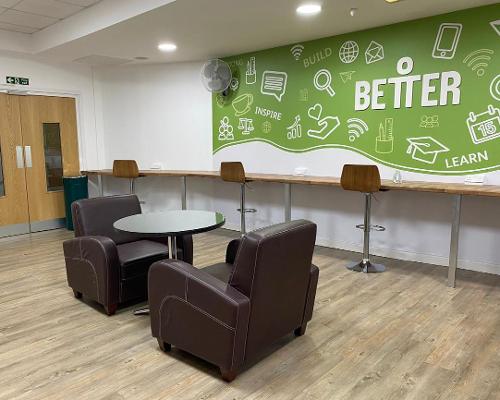features
Analysis: Shaping up
Although the diversity of COVID-19 responses around the world makes comparisons a challenge, as gyms open up, it’s possible to identify patterns of member behaviour, as Paul Bedford explains

Reactions to the pandemic vary widely by nation, from Taiwan, with its previous experience of SARS and robust track and trace system, to Sweden, which has largely remained open throughout. This means it’s challenging to find a global benchmark for the performance of health clubs following reopening.
However, by tracking gym, health club and studio performance during the first 12 weeks following a reopening, we’ve been able to observe a surge in attendances from 58 per cent to 81 per cent during the first seven weeks of trading, as existing members return and new people join.
When tracking the data of our clients, we’re seeing a spike in visits in the first one to five days, with many members visiting 3-4 times per week, even if that was not their visit frequency pattern before the lockdown. After 10 days, visit patterns begin to revert to pre-pandemic levels. This is similar to data presented recently by Egym for the German market.
It’s not possible to provide a single member return percentage globally, because health clubs around the world are operating in widely differing conditions and under different restrictions, but by tracking visit frequency data for the operators in our data set, we find that most have seen an average of 70 per cent of customers recording at least one visit in the first 10 days after a reopening.
In contrast, a few public sector operators in the UK have seen this figure as low as 27 per cent – likely for a variety of reasons, such as facilities being used as vaccination centres, which could be off-putting for some users, providers being unable to re-open all services, and limitations on class numbers.
Where they’re allowed to operate group exercise classes, our clients are reporting they’re running at capacity, but that can be anything as low as 25 per cent of pre-pandemic numbers due to social distancing restrictions.
David Connell, director of sport at the University of Hertfordshire Sports Village, UK, gives an example, saying: “Where we’re allowed to operate group exercise classes we’re operating at capacity, but we’re finding this is around 40 per cent of our pre-pandemic numbers, due to necessary social distancing requirements.
Having found other ways to exercise, some users in the UK have also simply decided not to return until after the summer (September).
Our clients based in Australia, Hong Kong and the UK that have been open for at least six weeks have seen up to 79 per cent of customers recording a minimum of one visit, but that still leaves a group of 21 per cent of people who didn’t cancel during extended lockdowns, but who have yet to return.
These people aren’t sleepers – just customers who’ve failed to come back yet. They’re likely to be those at high risk, who believe they would be vulnerable if they returned, or who are caring for people who are.
Enticing them back will require tactical reassurances around safety measures being implemented, as some customers say they’re not likely to return until all restrictions have been lifted.
Workplace habits
The pandemic has not only affected how we work out, but also how we work. Health clubs in city centres or the business districts of major cities have noticed that workers who would usually train around their commute aren’t working out in the same volumes, because less of them are commuting. But although the volume of customers visiting is lower in cities, visit frequency remains where it was pre-pandemic for those still going to the gym before and after work.
Analysing data from our US and UK clients by age, we can see the 18-34 age group has returned quickly, but has yet to establish a consistency in workout schedules.
It’s not clear why this is, but with so many alternative activities; shopping, bars, restaurants, public gatherings and some travel also reopening, it’s likely to be due to there being an abundance of options available now after an extended period of restrictions. Some may also be struggling to get into group exercise classes, while others may have migrated to online and/or outside workouts.
This age group responds well to challenges, so consider starting a series of eight – 12-week events and encourage them to join in. Promote group exercise wherever possible, as well as trialling new types of exercise.
Shorter workouts
The 35-54 age group has also returned and appears consistent in terms of visits, making up the majority of those visiting 2-3 times per week.
Entry and exit data from low cost operators, where members have to sign in and out again as they leave, shows a pattern of shorter workouts in this age group. We have no data to suggest these shorter workouts are higher in intensity, it simply appears that customers are training more efficiently and have less desire to dwell (see our feature on snackable workouts on page 52).
This trend is likely to be replicated in high-end clubs that have been unable to reopen their restaurant and bar areas. Fewer members training at any one time could also be making it easier to work out more quickly and effectively.
Operators should recognise, congratulate and incentivise this group’s frequency behaviour and also encourage staff to have conversations that inspire them to re-establish their goals, as some of these may have changed. They should also set targets with them for the next three months.
Older customers
Customers over 55 years of age appear to be finding it more difficult to re-establish regular exercise patterns within their health club, and it’s not clear why this is.
This age group makes up the majority of those recording no visits in the first 10 days of reopening. It’s important to note that these are live members who – pre-pandemic – were visiting regularly and were not sleepers.
As I’ve said earlier, reasons for non-attendance can include not feeling safe to return, caring for others and waiting for all services to resume.
Reach out to these customers in an attempt to identify their barriers to returning and address these. There’s also value in creating news stories to share with the local press, as well as positive video testimonials from customers of a similar age about their experiences of returning to the gym, to encourage others to make the move.
Think about running a campaign where a member brings a former member in with them – ‘Be a friend – Bring a friend back’. This age group is more likely to turn up with someone they know.
Changing times
What has been seen is a greater diversity of visit times. With so many working from home, people are choosing to exercise during the day, avoiding traditional peak times and navigating reduced access to equipment due to COVID-19 restrictions.
We’ve also seen an increase in visit frequency at traditionally quiet times of the day. Pre-pandemic, visits were generally around 15 per cent during the morning and 20 per cent during the day, with everyone else turning up in the evening.
Post lockdown – of the 24-32 per cent who are visiting twice per week – usage is being spread evenly, with a third training regularly in the morning, a third during traditional off-peak times and a third after 5.00pm.
Some operators intend to keep it this way by permanently running a booking system for gym sessions, even once government restrictions end. It will be interesting to see how this benefits retention figures, as members have to commit to attending and are less likely to just ‘slack off’ on the day.
Stuart Martin, MD of Active Nation, (see our interview on page 74), said: “We’ve been reviewing the viability of maintaining a booking system for gym sessions for a while now. We reached out to our customers with a short survey. The sample that came back from 4,582 respondents was 68 per cent in favour of retaining the Gym & Swim booking. We’ll now look at timetabling both booking and free times after full reopening.”
The extended lockdowns mean new exercise behaviours and routines have been formed and health clubs can no longer consider they have sole ownership of the exercise experience; customers around the globe reported engaging in a wider variety of fitness offerings and operators must accept they have to share revenue with other offerings, or take steps to provide a wider offering themselves to satisfy consumer habits.
However, this idea has been growing for some time – at the 2016 Retention Convention, Arron Williams (special projects director for Life Fitness at the time), reported an emerging trend of customers having a base health club membership and supplementing this with visits to boutique clubs on an ad hoc or weekly basis.
As well as taking online fitness classes, anecdotal evidence suggests health club members are reporting a greater appreciation for exercising outside – weather and pollution permitting.
So, the pendulum has swung. Gyms have reopened, and while there will be some customers that never return, there will also be demand from people who have never been before.
Facilities need to up their game – people have seen beautiful boutique studios on Instagram and used apps from the likes of Apple and Peloton and their expectations have been raised, so operators must enhance the experience – not just what the club looks like, but the equipment, the music, the instructors and most importantly, the engagement.




































































